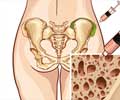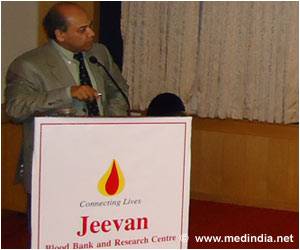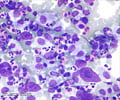Low dose interleukin-2 appears to be safe and effective in the treatment of chronic graft-versus-host disease.

What is graft-versus host disease (GVHD)?
Graft-versus host disease (GVHD) is a condition that may be seen in patients who have undergone a bone marrow or stem cell transplant (stem cells are undifferentiated cells that can form specialized cells). In the absence of a complete match, the cells of transplanted tissue may attack the recipient’s cells leading to a GVHD.
GVHD may be acute or chronic. Acute GVHD usually occurs within 3 month of transplantation. Symptoms include pain in abdomen, diarrhea, vomiting, fever, jaundice, skin rash and weight loss. Chronic GVHD appears after 3 months. Symptoms include hair loss, lung, digestive tract and liver disorders, and skin thickening and rash. A patient with GVHD is more prone to infections.
Current treatment includes corticosteroids and other drugs that suppress immunity.
What are regulatory and conventional T cells?
The presence of interleukin-2 (IL-2), a signaling molecule, is required for the growth, survival and activity of the regulatory as well as conventional T cells.
In a recently published study, 29 patients with chronic GVHD and not responding to corticosteroids were administered a low dose of IL-2 as a subcutaneous injection (injected just below the skin) daily for a total duration of 8 weeks. Patients who showed a good response to the drug could continue taking it after a 4-week gap.
Among the 23 patients who were evaluated for response to IL-2, the total number of T regulatory cells was increased in all the patients, with a maximum level at 4 weeks. The level of the conventional T cells was not affected, thus improving the ratio between T regulatory cells and conventional T cells by nearly 5 times. An improvement in symptoms was observed in around half the patients.
The response was maintained over a long period, allowing reduction of and, in some cases, discontinuation of the corticosteroid dose. Reappearance of the blood cancer or progression of GVHD did not occur in any patient. Side effects noted during the study which could have been due to IL-2 included fever, malaise and fatigue, kidney dysfunction and reduced platelet count.
Thus, a daily low dose of IL-2 could benefit patients with GVHD, especially those unresponsive to corticosteroids.
Reference:
John Koreth, et al; N Engl J Med 2011; 365:2055-2066
Source-Medindia









